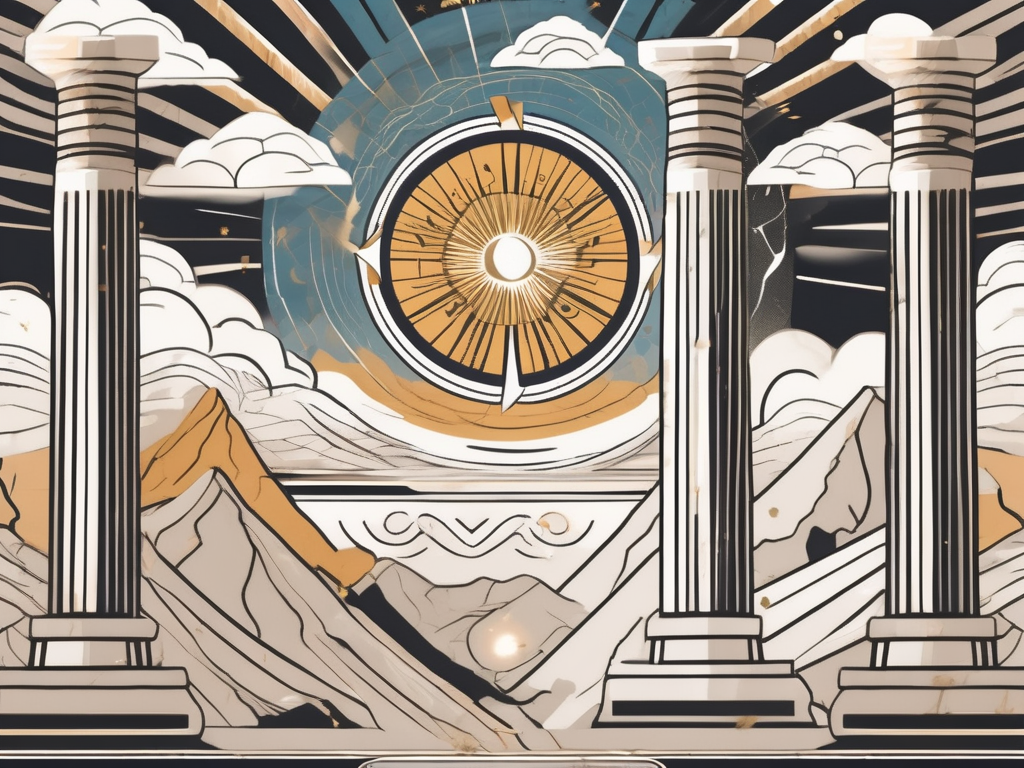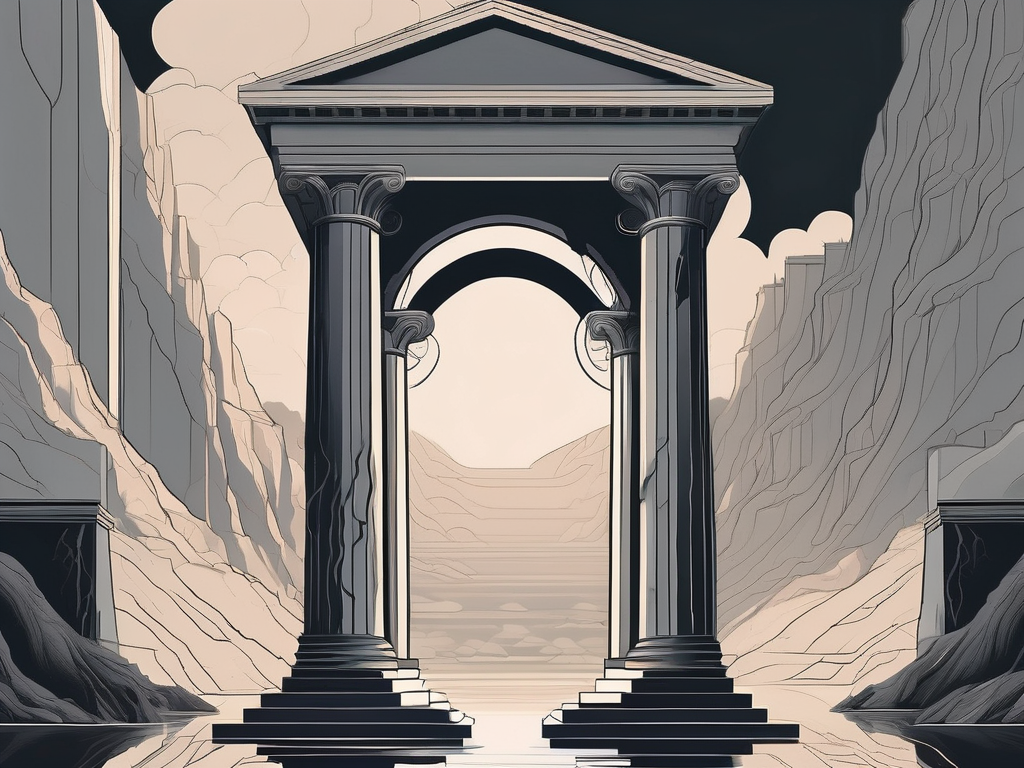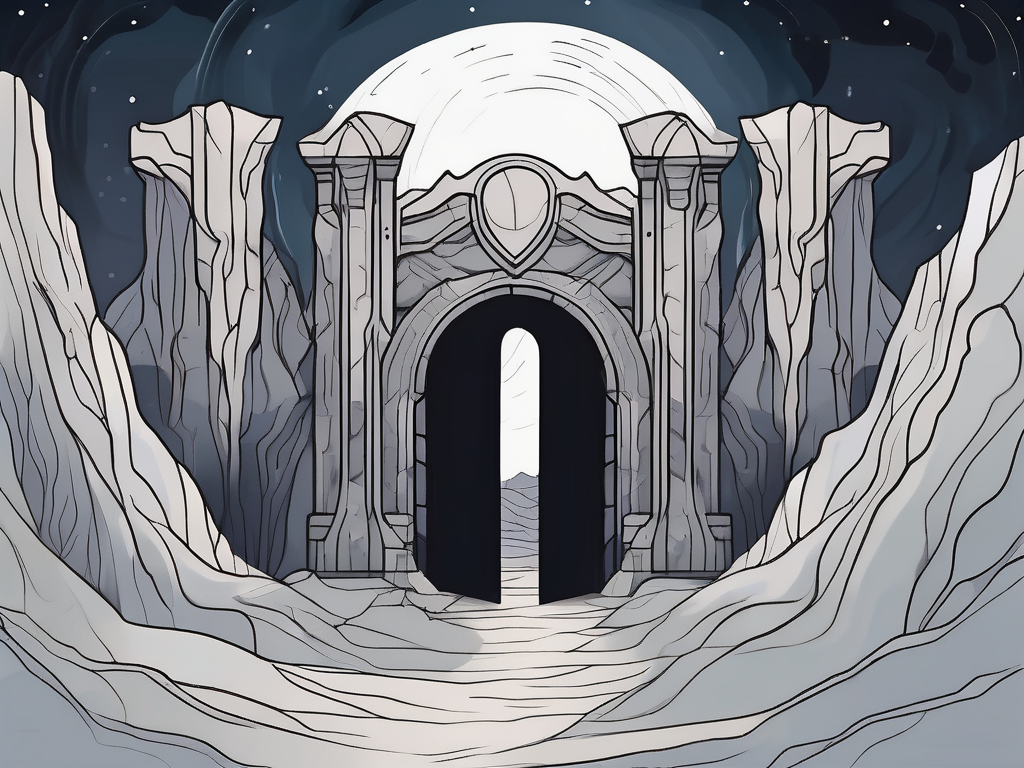Ancient Egyptian mythology is filled with fascinating and enigmatic gods and goddesses, each playing a vital role in the complex belief system of the time. One such deity is the Egyptian God of the Underworld, who holds a significant place in Egyptian mythology and religion. Join us on a journey as we explore the realm of the Underworld and delve into the mysteries surrounding this mythical figure.
Understanding the Role of the Underworld in Egyptian Mythology
The Underworld, also known as the Duat in Ancient Egypt, was a realm believed to be the final destination for souls after death. It served as a place of judgment, purification, and eternal existence. The concept of afterlife held immense importance in the Egyptian belief system, and understanding the role of the Underworld is key to comprehending this profound aspect of their culture.
In Ancient Egypt, the Underworld was not a place of eternal damnation like in many other mythologies, but rather a place where the deceased underwent a series of trials to determine their ultimate fate. It was believed that the souls would be judged by a panel of divine judges, led by none other than Osiris, the ruler of the Underworld and the god of rebirth.
The Underworld was also seen as a place of reunion, where the deceased could reunite with loved ones and live in eternal happiness. The Egyptian concept of afterlife was not merely an abstract idea but a tangible reality that inspired great devotion and shaped the lives of the ancient Egyptians.
The Concept of Afterlife in Ancient Egypt
The concept of afterlife in Ancient Egypt was deeply rooted in the belief of continuity and the preservation of the soul. The Egyptians believed that the soul, or ka, continued to exist after death and required sustenance in the form of offerings and prayers from the living. They constructed elaborate tombs and burial rituals to ensure the soul’s smooth transition into the afterlife.
These tombs, adorned with intricate murals and hieroglyphics, depicted scenes of the deceased’s life and their journey through the Underworld. These visual representations not only served as a guide for the soul but also reflected the Egyptians’ reverence for the afterlife and their meticulous preparations for the journey beyond.
Furthermore, the Egyptians believed in the existence of multiple layers within the Underworld, each with its own challenges and rewards. These layers were believed to be interconnected, forming a complex network of passages and chambers that the souls had to navigate. The journey through the Underworld was not a straightforward one but rather a labyrinthine experience, filled with tests of character and obstacles to overcome.
The Underworld’s Place in the Egyptian Pantheon
Among the many gods and goddesses worshipped by ancient Egyptians, the God of the Underworld held a special place in their hearts. Known as Anubis, this deity was often depicted with the head of a jackal, symbolizing his association with death and embalming.
Anubis played a crucial role in the Underworld, guiding the souls through the perilous journey of judgment and purification. He was seen as the protector of the deceased and was responsible for ensuring their safe passage into the afterlife. Anubis’ presence provided solace to the living, who sought his assistance in the proper burial and preservation of their loved ones.
Moreover, the Egyptian pantheon included other deities associated with the Underworld, such as Hathor, the goddess of love and beauty, who was believed to welcome the souls into the afterlife with open arms. The presence of these gods and goddesses in the Underworld further emphasized the significance of this realm in Egyptian mythology.
In conclusion, the Underworld in Egyptian mythology was a multifaceted realm that played a vital role in the belief system of ancient Egyptians. It served as a place of judgment, purification, and eternal existence, where the souls of the deceased underwent trials to determine their ultimate fate. The concept of afterlife was deeply ingrained in Egyptian culture, reflected in their elaborate tombs and rituals. The gods and goddesses associated with the Underworld, such as Anubis and Hathor, held special places in the hearts of the ancient Egyptians, providing comfort and guidance to both the living and the dead.
Anubis: The Original God of the Underworld
As we delve deeper into the ancient Egyptian mythology, we encounter Anubis, the original God of the Underworld. Anubis’ unique position in the pantheon of gods makes him a central figure in the mythological tapestry of Egypt.
Anubis’ Role and Responsibilities
Anubis was not only the guide and protector of the deceased but also played a crucial role in the embalming process. He was believed to oversee the proper preservation of the body, a vital step in ensuring a smooth transition into the afterlife. As a result, Anubis was frequently invoked during funeral ceremonies, with hopes of his divine intervention to grant the deceased a favorable judgment.
Additionally, Anubis was associated with mummification, an intricate process aimed at preserving the body for eternity. The ancient Egyptians believed that by successfully preserving the bodies, the soul would have a permanent abode in the afterlife.
Symbolism and Iconography of Anubis
Anubis was often depicted with the head of a jackal, symbolizing his close association with death and the funerary rituals. The jackal was a creature frequently observed near the tombs, leading to its association with the Underworld and the role of Anubis as the shepherd of souls.
Furthermore, Anubis’ appearance as a black jackal may represent the color of decaying flesh, or it could symbolize the fertile black soil of the Nile floodplain, where the Egyptians believed the afterlife and rebirth occurred.
Osiris: The Successor to Anubis
If Anubis laid the foundation for the God of the Underworld, then Osiris built upon it, becoming one of the most revered and influential deities in Egyptian mythology.
The Myth of Osiris’ Death and Resurrection
The story of Osiris forms the crux of ancient Egyptian religious beliefs, showcasing themes of death, resurrection, and the transformative power of rebirth. According to the myth, Osiris was a wise and just ruler who was betrayed and killed by his jealous brother Set.
After his murder, Osiris’ body was dismembered and scattered throughout the land. However, through the devotion of his wife and sister Isis, he was resurrected and became the eternal ruler of the Underworld.
Osiris’ story served as a beacon of hope for the ancient Egyptians, assuring them of the possibility of rebirth and eternal life. His popularity soared, and he became one of the central figures in Egyptian religious practices and rituals.
Osiris’ Influence on Egyptian Culture and Religion
The myth of Osiris had far-reaching implications, permeating various aspects of ancient Egyptian culture and religion. Osiris became the ultimate judge of the dead, presiding over the Hall of Judgment and determining the fate of souls based on their moral actions during their lifetime.
Pharaohs, in particular, associated themselves with Osiris, viewing themselves as his earthly representatives. This connection between Osiris and the Pharaoh solidified the belief in their divine right to rule and the expectation of their eventual reunion with the deity in the afterlife.
The Journey of the Dead in the Underworld
Now that we have explored the deities governing the Underworld, let us turn our attention to the journey of the deceased through this mystical realm.
The Weighing of the Heart Ceremony
One of the most significant moments during the soul’s journey through the Underworld was the Weighing of the Heart ceremony. It was believed that upon entering the Hall of Judgment, the deceased’s heart would be weighed against the feather of Ma’at, the goddess of truth and justice.
If the heart balanced with the feather, the soul would gain eternal life in the blissful fields of Aaru. However, if the heart weighed heavier with the burden of sins and wrongdoing, it would be devoured by the menacing creature Ammit, leading to the dreaded second death and the cessation of existence.
The Twelve Gates and Their Guardians
The journey through the Duat was fraught with peril, as the soul had to navigate through a series of twelve gates, each guarded by powerful deities. These guardians served as gatekeepers, testing the knowledge and purity of the deceased before allowing passage to the next realm.
The guardians ranged from the fearsome and intimidating to the compassionate and benevolent. The deceased had to recite the appropriate spells and rituals to satisfy the guardians and progress through each gate, gradually approaching their ultimate destination in the afterlife.
The Underworld in Egyptian Art and Architecture
The highly symbolic and visually striking representations of the Underworld can be found in various forms of ancient Egyptian art and architecture.
Depictions of the Underworld in Tomb Paintings
Ancient Egyptian tombs showcased elaborate paintings and intricate murals depicting scenes from the Underworld. These images served as a guide for the soul, providing instructions and assistance on their journey through the afterlife.
The murals often depicted the deceased in various stages of judgment and purification, offering a glimpse into the beliefs and rituals surrounding the Underworld. The attention to detail and the vibrant colors used in these paintings showcased the Egyptians’ reverence for life beyond death and their fervent desire for a successful transition into the afterlife.
Architectural Representations of the Underworld
The fascination with the Underworld extended beyond tomb paintings into the realm of architecture. The ancient Egyptians incorporated representations of the Underworld, such as gateways and protective deities, into the design and construction of their monumental tombs and temples.
These architectural elements not only served as physical reminders of the connection between the earthly realm and the afterlife but also acted as symbolic guardians, ensuring the deceased’s safe passage and eternal existence in the Underworld.
As we conclude our mythological journey, we have explored the mystique surrounding the Egyptian God of the Underworld and gained insights into the intricate belief system of the ancient Egyptians. The Underworld, with its deities, trials, and vibrant depictions, played a significant role in shaping their religious practices and cultural heritage. The enduring fascination with these myths and their iconic symbols reflects the lasting impact of Egyptian mythology on the world today.












